Women have commonly used medicinal herbs to manage menopausal symptoms and improve their overall quality of life. Herbs may be used to manage symptoms of menopause including hot flushes, night sweats, mood changes, insomnia (sleeplessness), fatigue, sexual dysfunction and vaginal dryness.
The use of herbs in menopause is based on longstanding traditional use, some of which is supported by scientific evidence (available below). However, more research is needed regarding the effectiveness and safety of herbal therapies for the management of menopausal symptoms.
Over the counter herbal products
Hot flushes and night sweats
Mood changes, fatigue and insomnia (sleeplessness)
Vaginal changes
Low libido (sex drive)
Herbal medicine glossary (alphabetical)
Every culture throughout the world has at some point used healing plants as the basis for its medicines. The plant parts that are used as medicinal herbs may be leaves, seeds, roots or flowers.
The types of herbs used to manage menopausal symptoms include: black cohosh, dong quai, evening primrose, hops, Korean ginseng, linseed (flaxseed), red clover, St John's wort and wild yam. Some herbs are used more specifically for low sex drive (libido), such as tribulus, maca and horny goat weed, whereas others are more commonly used for insomnia, anxiety and fatigue, such as lemon balm, valerian and passionflower.
Herbs or herb mixtures may be dried and combined with boiling water to make teas (infusions or decoctions), concentrated in alcohol and water to make tinctures or extracts, or made into tablets and powders. Herbs can also be used externally as a poultice (herbs made into a paste and applied to the skin) or made into creams and ointments.
There are many complementary and alternative medicine (CAM) products available over the counter and online, with various formulations of herbs and/or nutrients for treating the symptoms of menopause. The effectiveness of these preparations can vary greatly due to the combination of herbs used, as well as the quality or amounts of herbs used.
The best way to seek guidance about these herbal remedies is to consult a health practitioner trained in herbal medicine use, such as a herbalist/naturopath or Chinese medicine practitioner.
We know that about 13% of Australian women use CAM therapies for managing hot flushes, and that the three most commonly used CAM therapies are phytoestrogens (plant-based female hormones), evening primrose oil and ginseng.[1] We know that these are not necessarily the most effective remedies, and we also know that only about 25% of these women consult an expert for advice about these therapies. Therefore, many women may be making inappropriate – or indeed, ineffective – choices.
When buying herbal medicines over the counter, you need to consider some of these factors:
Many herbal therapies have been tried for relief of hot flushes and night sweats in menopausal women. Some herbs have been found to be effective in reducing hot flushes, whereas others have been found to be no better than a placebo (dummy medicine). Some have not been studied rigorously.
Black cohosh is perhaps the most extensively researched of all herbs used for managing menopausal symptoms. It is available in many different products, which vary in quality and effectiveness, and it can be combined with other herbs to tailor a formula specifically for hot flushes. Evidence is conflicting: some studies show it is effective and others do not.
St John's wort, on its own or in combination with other herbs, has been shown to be significantly better than placebo in the treatment of menopausal symptoms.[2] In combination with black cohosh or passionflower, St John's wort may decrease hot flushes significantly and improve your mood compared to placebo.[3, 4]
Hops contain a potent phytoestrogen (plant-based oestrogen), and some research has shown that it may be useful for menopausal symptoms such as hot flushes.[5]
Red clover also contains phytoestrogens called isoflavones that may help ease hot flushes and night sweats, but seemingly more so in women who are postmenopausal (after menopause) than perimenopausal (around the time of menopause).[6]
Other herbal therapies such as dong quai, evening primrose, Korean ginseng and linseed (flaxseed) continue to be used for hot flushes, but evidence is lacking, or shows they are no better than placebo.
Common mood changes that menopausal women experience include irritability, anxiety and depression. Mood changes often go hand-in-hand with poor sleep and fatigue, and night-time symptoms certainly contribute to this. Some herbal therapies have been found to benefit these symptoms.
Korean ginseng is traditionally used to help improve fatigue, physical exhaustion and loss of physical stamina. It may also increase vitality and improve your concentration. It is one of the most commonly self-prescribed herbs for menopausal symptoms because of its female hormonal (oestrogenic) properties and its ability to help you cope with stress.[1, 11]
Chamomile is a gentle sedative, and its relaxing action may be useful for aiding sleep and anxiety.[12] Hops traditionally have been used to treat anxiety, stress and associated insomnia.[5] Lemon balm, valerian and passionflower can aid sleep and reduce anxiety.[13, 14, 15]
St John's wort is used traditionally for mild to moderate anxiety, irritability and depressed mood associated with menopause.
Black cohosh, taken orally (by mouth) or topically (as a cream or pessary), may be useful for treating vaginal dryness.[17] Black cohosh pessaries or vaginal cream are available only from naturopaths.
Linseed (flaxseed) has been shown to reduce vaginal dryness by a mildly oestrogenic action of 'plumping up' the vaginal cells.
Many cultures use herbs with a reputation for increasing libido. It is not clear whether these herbs actually stimulate your sexual urge or have a hormonal effect. They possibly act as general tonics to increase energy and vitality and support your steady emotional state to help improve your sexual desire.
Many factors influence your libido, including your relationship with your partner, medications, general health and wellbeing, body image and vaginal dryness causing painful sex. It is important to address your lifestyle, nutritional, medical and particularly relationship factors that may play a role in your low libido, and not rely solely on herbal medicine.
Some of the herbs used for treating low libido include Korean ginseng, tribulus and maca. Many formulas are marketed to women claiming to improve sex drive.
Korean ginseng may improve sexual function and arousal in menopausal women.[9]
In a very small study of 45 postmenopausal women with low libido, tribulus was shown to reduce pain and improve sexual desire, arousal, lubrication and ability to achieve orgasm, compared to placebo.[19]
Maca has a reputation for improving sexual function, and is one of the most popular herbs sought for this. However, there is limited evidence to support these claims.[20]
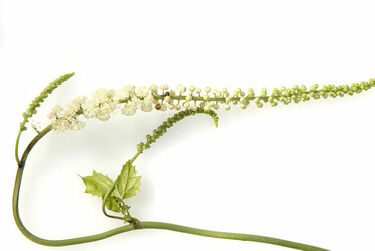
For centuries, Native North American women have used black cohosh for menstrual cramps and menopausal symptoms.[21]
Black cohosh is the most extensively researched of all herbs used for managing menopausal symptoms, and is available in many different formulations, which vary in quality and efficacy. Many of the clinical studies of black cohosh have used the commercially available product Remifemin®, or the extract Ze 450 (available as Flordis Femular®).
It is not clear how black cohosh acts on the body. It does not appear to act like the female hormone oestrogen, but may be involved in modulating oestrogenic pathways in the body.[22] It may mimic the actions of the neurotransmitters (natural brain chemicals) serotonin and dopamine.[23]
Precautions: black cohosh should be taken only for as long as your menopausal symptoms persist. It is generally well tolerated, although can cause headaches in some women. Headaches usually stop if the dose is reduced for a while, then gradually increased again.[21]
Black cohosh is often used in early menopause brought on by cancer treatments, especially breast, ovarian or endometrial cancer. Of all the herbs, black cohosh has the most research about its safety in support of its use. It appears to be safe in breast cancer patients, although further research is needed.[24] Women with breast cancer or other hormone-dependent tumours should always talk to their doctor before taking black cohosh.
Black cohosh has been associated with liver damage in some people, but this is very rare. The majority of cases suspected of liver damage have in fact been shown NOT to be related to black cohosh.[25]
This herb is widely used in women's health, particularly for premenstrual syndrome (PMS), and most studies support its efficacy[26], particularly with specific extracts. However, it is not usually considered useful for the management of menopausal symptoms. It may be useful for the relief of PMS symptoms in perimenopausal women with erratic cycles. It should be prescribed only by a health practitioner trained in herbal medicine.
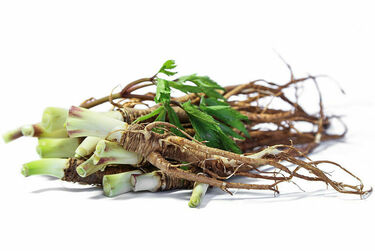
Dong quai root is one of the most widely used traditional Chinese herbs for women's health, including for period pain, menopause and menstrual irregularity.[7] Some women believe it is useful for hot flushes, but overall the evidence is not very supportive; however, doses of dong quai used in research have been much lower than traditional Chinese medicinal dosage, and traditionally it is also used in combination with other Chinese herbs as powder or pill formulae.
Precautions: Due to the potential for oestrogenic (female hormonal) effects, some test-tube evidence suggests women with breast cancer should avoid dong quai until further safety information becomes available.[27] You should also exercise caution if you are on anticoagulant (blood-thinning) medication, such as warfarin, heparin or aspirin, as it can increase bleeding time. For this reason, you should stop taking it a week before any surgery to avoid bleeding complications.
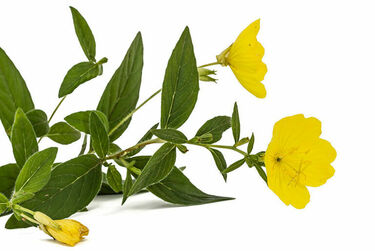
Evening primrose oil originates from the seeds of the flowering plant and is a rich source of omega-6 fatty acids, gamma-linolenic acid and linoleic acid. It is widely self-prescribed and recommended by health professionals for treating hot flushes; however, it has been shown to be no better than a placebo (dummy pill) for hot flushes.[8] It may be effective, combined with vitamin E, for premenstrual breast pain.[28]
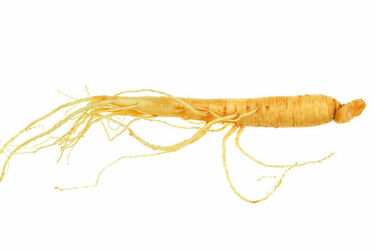
The ginseng root is a Chinese medicinal 'adaptogenic' herb, which is a herb that may promote resistance to external and internal stresses and may improve your physical and mental function.
It may be used for relief of menopausal symptoms, stress, fatigue, physical exhaustion and loss of stamina. It is said to heighten your vitality and concentration and improve your sexual function and arousal. One study showed that ginseng improved (ie, reduced) the number of hot flushes compared to placebo, but overall it did not improve symptoms of hot flushes.[9]
Precautions: Korean ginseng has been associated with postmenopausal vaginal bleeding (bleeding after menopause). This could be related to an anticoagulant (blood-thinning) or oestrogenic (female hormonal) effect of the herb.[29] It should be used with caution in those on anticoagulant (blood-thinning) medications, such as warfarin, heparin and aspirin, and stopped a week before any surgery.
If you have hypertension (high blood pressure), or drink excessive amounts of caffeine (in tea, coffee, cola and energy drinks), you should not take Korean ginseng. It is also said perhaps to worsen infections, so is best avoided. You should only ever use it short-term (2–4 weeks).
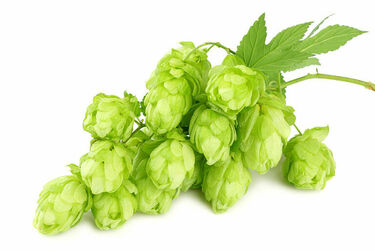
The female flowers of hops, known as strobiles or seed cones, are well known as the bittering agent in beer brewing. They also traditionally have been used to treat sleep disturbances, menopausal symptoms such as hot flushes, sexual dysfunction, anxiety or stress, and associated insomnia (sleeplessness).
Historically, hops were first observed to have some hormonal effect when female hop-pickers experienced menstrual-cycle disturbance. It is now known that hops contain a potent phytoestrogen (plant-based female hormone). The action of your gut bacteria (microbiota) may alter the effectiveness of this herb, but this varies between individuals.
There is some research that shows that hops may be useful for menopausal symptoms including hot flushes, as well as improvement in anxiety, depression and sexual dysfunction.[30]
Precautions: There is some evidence, from animal studies, that one of the phytoestrogens found in hops can stimulate breast-cancer cells to grow. Until there is further knowledge about the safety of hops, this herb, especially standardised hops extracts, should be avoided or used with caution if you have, or have had, breast cancer.[31]
Traditional evidence also suggests if you have had severe depression, you should not take this herb.
Horny goat weed has been used in traditional Chinese medicine for more than 2000 years to enhance libido in men and women, as well as for symptoms of menopause and PMS.[32] It is a popular herb, available over the counter, for both men and women seeking to improve libido and sexual function. However, there are no clinical trials using horny goat weed for menopausal symptom relief, or for sexual function.
Precaution: A single case of mania and increased heart rate has been reported in the scientific literature, associated with taking horny goat weed.[33]
Lemon balm leaves have been used for more than 2000 years in Europe and the Middle East to calm digestion, lighten mood and improve memory, and for insomnia (sleeplessness) and anxiety.[13] It is generally taken as a tea, either using the dried or fresh herb. Per cup, use 1 teaspoon of dried herb or 2–3 teaspoons of fresh herb, and infuse for 5–10 minutes. Drink up to 3 cups per day. To aid sleep, combine with valerian and drink one hour before bed.
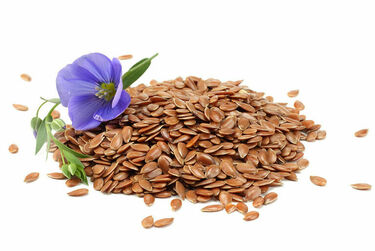
Linseed (also known as flaxseed) contain phytoestrogens (plant-based female hormones) called lignans. Your gut bacteria (microbiota) act on lignans, enabling them to have a weak oestrogenic effect. As lignans are found in seeds' cell walls, you must grind the seeds to release the lignans. Linseeds also contain an omega-3 fatty acid, alpha-linolenic acid, and are rich in soluble dietary fibre.[18]
In a small study, linseed has been shown to reduce vaginal dryness by a mildly oestrogenic action of 'plumping up' the vaginal cells.[18]
Human and animal studies have shown linseeds may be preventive for breast cancer.[34]
The recommended daily dose of ground linseeds is 25g, or about two heaped dessertspoons, which you can sprinkle on breakfast cereals, add to smoothies or make into muffins.
Precautions: Although flaxseed oil is rich in polyunsaturated fatty acids, it does not contain phytoestrogenic lignans, so it is essential to eat the seeds for the phytoestrogens and fibre.
Once linseeds are ground, the good oils oxidise and are beneficial for only about two weeks. Therefore, rather than buying pre-ground linseeds, they should be freshly ground and stored in an airtight container in the fridge for a maximum of two weeks.
Linseeds are high in fibre and may cause bloating or increased bowel movements in some women.
Maca has been used for centuries in the Andes to manage anemia (low iron), infertility (difficulty becoming pregnant) and female hormonal balance. It has a reputation for improving sexual function and is also used for menopausal symptoms, but despite its popularity, there is little evidence to support its use in menopause.[35]
Passionflower comes from the aerial parts and leaves of the plant. Taken as a tea or tablet, it may help with insomnia (sleeplessness). In a small study of 59 Iranian women, menopausal symptoms were improved with either St John's Wort or Passionflower (Passiflora incarnata) over six weeks. Symptoms of anger, palpitations, creeping feeling on skin (formication), depressed mood and muscular pain improved in the first three weeks, whereas the intensity of hot flushes and symptoms of headache, weakness and fatigue improved by six weeks of treatment.[4]
However, there was no placebo group in this study, and it is well known that hot flushes often improve with a placebo treatment, so larger randomised controlled (ie, with a placebo group) studies are needed to prove whether these herbs are effective for the management of these menopausal symptoms.
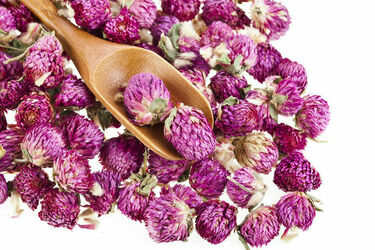
Traditionally, the flowers of red clover have been used for skin conditions, such as eczema and psoriasis, and coughs.
Red clover is one of the most widely researched herbs for menopausal health. It contains phytoestrogens (plant-based female hormones) called isoflavones, which can have oestrogen-like actions in the body. Most of the research conducted on red clover has been on the preparation Promensil®.
It may be beneficial for hot flushes, but evidence for its effectiveness is conflicting, due to varying formulations and dosages. Some research suggests it may be more effective if you are postmenopausal (after menopause) rather than perimenopausal (around the time of menopause), and if you experience five or more hot flushes per day.[6]
There is limited evidence that it may help to maintain bone health and perhaps reduce LDL cholesterol (so-called 'bad' cholesterol).
Precautions: The safety of red clover for patients with breast or endometrial cancer has not been established.[36]
Shatavari is a traditional Ayurvedic (Indian) herb used as a general female tonic. The name translates to 'she who possesses a hundred husbands', hence its reputation as a herb for libido. It is thought to help with libido as it improves general wellbeing.[37] Shatavari contains compounds (steroidal saponins) that look structurally similar to oestrogen. Although this herb is one of the major health tonics and most popular Ayurvedic herbs to treat ailments of women, the way it works is poorly understood.[38]
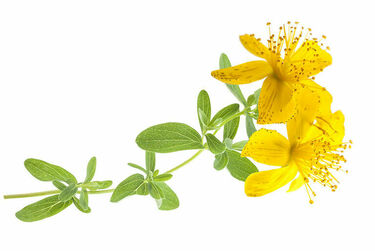
St John's wort traditionally has been used for menopausal symptoms of anxiety, irritability, insomnia (sleeplessness) and depression. It can be useful for hot flushes. It does not possess hormonal actions and its antidepressant action is believed to be due to a combination of active constituents in the herb.[39] St John's wort has been studied extensively for its effectiveness in mild to moderate anxiety and depression. It may be that St John's wort is as effective as selective serotonin reuptake inhibitors (SSRIs) for the treatment of depression, and it may have fewer side effects.[16]
A recent review suggests St John's wort, alone or combined with other herbs, may be significantly better than placebo (dummy medicine) in the treatment of menopausal symptoms.(ii) it is particularly effective when combined with black cohosh to decrease hot flushes and improve mood.[3]
Precautions: St John's wort influences your liver enzymes that can reduce or increase the effectiveness of certain medications. It is one of the few herbs that has been studied for interactions with medications. If you are on the following medications, you should be very cautious about using St John's wort, and consult your own doctor:
Traditionally, this herb has been used for generations to energise and improve sexual function and physical performance in men, but Tribulus may be useful also in improving sexual desire in postmenopausal women.[40] This herb contains constituents (steroidal saponins) that look structurally similar to oestrogen and may be responsible for the 'hormonal activity'. It also has been proposed that the active components of Tribulus can be converted into weak androgens similar to DHEA, which could, in turn, be converted into more powerful androgens, such as testosterone in the ovaries and peripheral tissues.[41]
Valerian, in the form of a herbal tea or tablet made from the root and rhizome of the plant, may help with insomnia (sleeplessness). It has been shown to improve the quality of sleep in postmenopausal women, but may take up to four weeks of regular use to have an effect. In a very small number of people, valerian has a stimulating effect (keeping you awake), rather than a sedating one.[15]
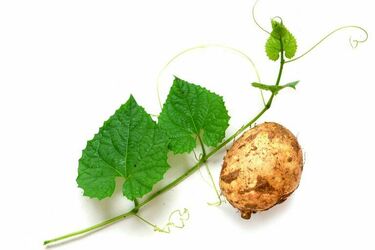
This North American herb was used traditionally to treat colic (abdominal cramps), period pain, ovarian pain and arthritis. It has been popular for treatment of menopausal symptoms, although there is no good evidence for its effectiveness.
Wild yam cream contains diosgenin, a substance related to the female hormone progesterone. It was once used as the source of hormones for oral contraceptive pills. Contrary to popular claims, this substance is not converted to progesterone in the body.
Research shows no significant benefit of wild yam to menopausal symptoms.[42]
Precautions: Some wild yam creams do not contain any wild yam and some have been adulterated ('spiked') with hormones including oestrogens and progesterone not mentioned on the label.[43] For this reason, wild yam cream is best avoided.
This content has been reviewed by a group of medical subject matter experts, in accordance with Jean Hailes policy.
© Jean Hailes Foundation. All rights reserved. This publication may not be reproduced in whole or in part by any means without written permission of the copyright owner. Contact: licensing@jeanhailes.org.au